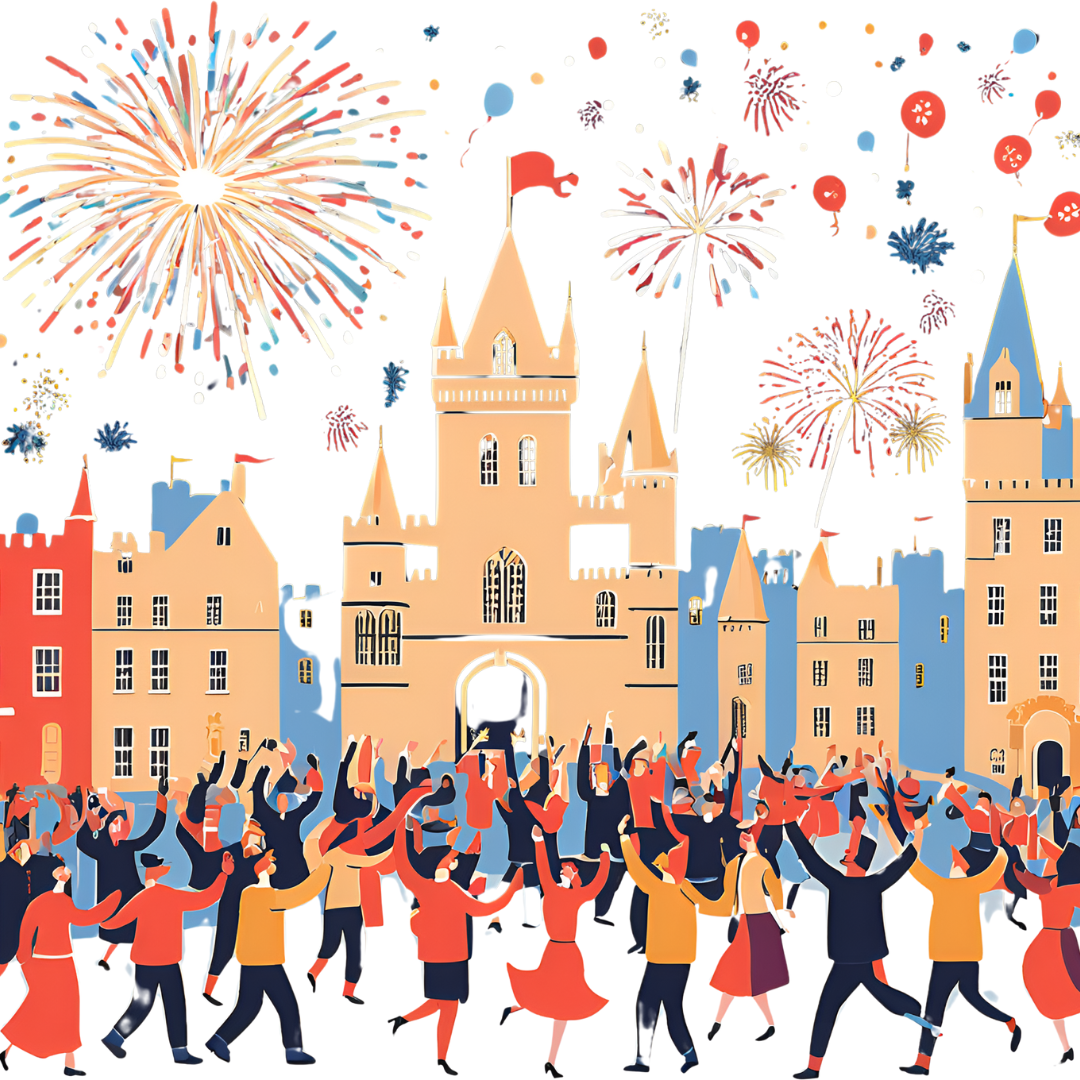It is one of the most important holidays in the Scottish calendar, even overshadowing Christmas in earlier times due to Scotland’s historical ties to the Protestant Reformation, which discouraged Christmas celebrations.
Origins and History:
The exact origins of Hogmanay are unclear, but it is thought to have roots in various cultural influences, including Norse and Gaelic traditions, as well as ancient winter solstice celebrations. The Viking invasions of Scotland left their mark, and their midwinter celebrations likely contributed to the modern Hogmanay. The name “Hogmanay” itself may derive from the Old French word hoguinané, meaning a New Year’s gift, which could have been introduced to Scotland by the Auld Alliance with France.
The Reformation in Scotland led to Christmas being downplayed for several centuries, and Hogmanay grew in importance as the primary winter festival. Only in the mid-20th century did Christmas begin to regain its status as a widely celebrated holiday in Scotland, but Hogmanay retained its central role in New Year festivities.
Key Traditions:
- First-Footing: One of the most enduring Hogmanay customs is first-footing, which involves being the first person to enter a friend’s or neighbour’s home after midnight to bring good luck for the coming year. Traditionally, the first footer should bring gifts such as coal (for warmth), shortbread, whisky, or black bun (a rich fruitcake) as tokens of good fortune. A dark-haired male first-footer is considered particularly lucky, as this harks back to fears of Viking invaders, who were typically fair-haired.
- Fire Festivals: Fire plays a significant role in Hogmanay celebrations, symbolizing the cleansing of the old year and the welcoming of the new. Across Scotland, various towns and cities have fire festivals that often include torchlight processions, bonfires, and fireworks. The Stonehaven Fireball Ceremony, near Aberdeen, is one of the most famous. Participants swing blazing fireballs around their heads as they march through the town, a spectacle said to ward off evil spirits.
- Auld Lang Syne: The singing of Robert Burns‘ Auld Lang Syne at the stroke of midnight is a central part of Hogmanay. The famous Scottish song, which means “times long past,” is sung as people join hands in a circle, often with arms crossed in a sign of unity and reflection on the passing year.
- Street Parties and Celebrations: Hogmanay is known for its large public gatherings, especially in cities like Edinburgh, which hosts one of the world’s most famous New Year’s street parties. The Edinburgh Hogmanay festival includes concerts, ceilidhs (traditional Scottish dancing), fireworks displays, and a torchlight procession through the city’s historic streets. Similar celebrations take place in Glasgow, Inverness, and other towns.
- Redding the House: In older times, Scots would “redd” the house before Hogmanay, a practice of thoroughly cleaning the home to rid it of bad spirits or misfortune from the previous year. The hearth was especially important, as fire was a symbol of warmth and family. This tradition is similar to “spring cleaning” but was performed in preparation for the new year.
- Loony Dook: A more modern Hogmanay tradition, the Loony Dook involves participants taking a bracing plunge into the freezing waters of the River Forth at South Queensferry, near Edinburgh, on New Year’s Day. It has become a popular and lighthearted way to start the new year with a fresh (and very cold) outlook.
Hogmanay Today:
Hogmanay continues to be a time for Scots to come together with friends and family, reflect on the year that has passed, and celebrate the start of a new one with food, drink, music, and plenty of warmth and laughter. Despite its roots in ancient traditions, it remains a vibrant and evolving celebration that still holds great cultural significance in Scotland today.
The combination of history, tradition, and community makes Hogmanay a unique and powerful symbol of Scottish identity and resilience.


